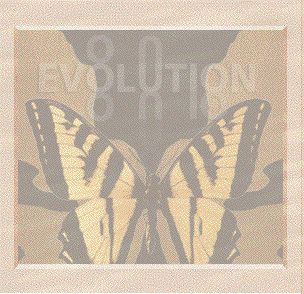The theory of natural selection (part 1) - How rapidly do populations change through time?

Natural selection and change
One important feature of the elementary model introduced earlier is that it shows how rapidly, in evolutionary time, natural selection can produce change.
The simplest case:
• Natural selection operating on only one genetic locus;
• Two alleles, one dominant to the other.
Suppose that individuals with the three genotypes have the following relative chances of survival from birth to the adult stage:
| genotype | chance of survival |
|---|---|
| AA , Aa | 1 |
| aa | 1-s |
s is a number between zero and one; it is called the selection coefficient. This is a measure of the extent to which natural selection is acting to reduce the relative contribution of a given genotype to the next generation. If s = 1, selection against the genotype is total, and it makes no contribution to the next generation.
How rapidly will the population change through time?
To find out, we seek an expression for the change in gene frequency between two successive generations, Δp = p' - p . The relative frequencies after selection do not add up to one, and we correct them by dividing by the mean fitness.
mean fitness = p² + 2pq + q²(1-s ) = 1 - sq²
If we tried to predict the proportion of aa from q², using the Hardy-Weinberg ratio, we should fail. The frequency of aa is q²(1-s ) / 1-sq², not q²
What is the relation between p' and p ?
Remember that the frequency of the gene A at any time is equal to the frequency of AA plus half the frequency of Aa . We have just listed those frequencies in the adults after selection:
p' = p² + pq / (1-sq²) = p / (1-sq²)(remember p+q = 1, and therefore p² + pq = p (p +q ) = p .) The denominator 1-sq² is less than one, because s is positive, so p' is greater than p : selection is increasing the frequency of the A gene.
We can now derive a result for Dp , the change in gene frequency in one generation. The algebra looks like this:
Δp = p' - p = (p²+pq)/(1-sq²) - p
Δp = (p - p + spq²)/(1-sq²)
Δp = spq²/(1-sq²)
This equation can be used to calculate a gene frequency change given the fitnesses. We can use this to build a Virtual Experiment: given initial frequencies and a value for s, we can build this model into a simulation of changes in gene frequencies by simply reiterating this equation.
Beginning with p =0.01, the experiment takes the selection coefficient, s , as an input parameter. Try running the simulation with different values for s . Which gene do you expect to increase? When would you expect the increase of this gene to be most rapid? Try to explain why the increase in the frequency of this gene slows down as it becomes more common.
| Next |



